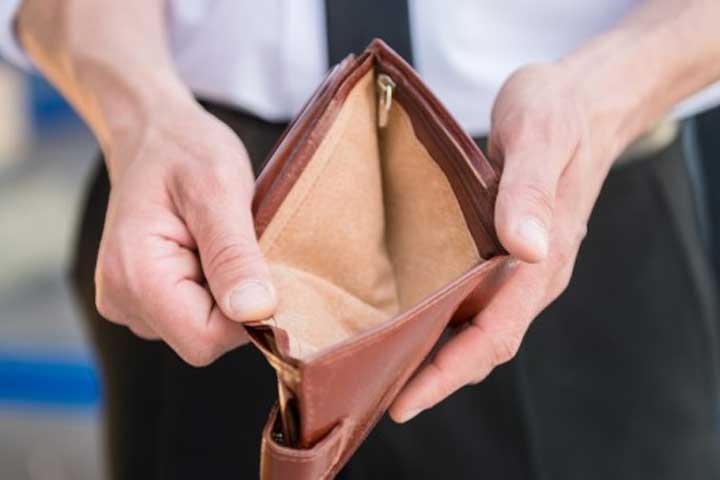For many Singaporeans homeowners, paying off their home loans using their CPF seems to be the default option.
This could possibly be attributed to the lack of understanding of CPF. A common misconception is that your CPF is money that can never be withdrawn – hence you’d be better off using it to service your mortgage.
Another reason may be to avoid forking out cash, which allows homeowners to feel as though they can maximise the cash portion of their salary for all other expenses instead of putting a sizeable chunk of it towards their home loan.
However, this is arguably a short-sighted mindset. Many homeowners fail to realise that several opportunity costs arise as a result of choosing to pay their home loan using CPF, specifically with the CPF Ordinary Account (OA).
What is CPF?
Firstly, it’s essential to have a clear understanding of how CPF works. CPF is a vital part of Singapore’s social security system, designed to help its citizens set aside sufficient funds for their retirement. Both employers and employees are mandated to contribute monthly to CPF.
If you’re an employee with a CPF account, your monthly CPF contributions would be split up among these three accounts in different percentages, based on your age.
Here are the 3 different accounts:
• Ordinary Account (OA), which is for housing, retirement, investment and insurance needs
• Special Account (SA), which is for old age and investment
• MediSave Account (MA), which is for medical expenses and health insurance
Finally, there is a 4th account, the Retirement Account (RA), which will only be created upon reaching the age of 55.
What can you use your CPF for?
Singaporeans can tap on their CPF OA to pay for monthly housing loans on their residential properties. This applies to both HDB and bank loans. It also covers other housing-related fees, such as:
• Stamp duty on Option to Purchase (OTP)
• Stamp duty on mortgage
• Additional Buyer’s Stamp Duty (ABSD)
• Home Protection Scheme (HPS) insurance
• Conveyancing legal fees
• Title search fees
• Caveat registration fees
Losing interest
While it might be true that CPF funds isn’t as easily withdrawn as compared to cash savings in the bank, it does come with its upsides.
One big plus point is the guaranteed 2.5% interest rate paid to your funds in your CPF OA. This is much higher than the interest rate paid out by most banks.
By choosing to pay your home loan with CPF, you’re technically losing out on this guaranteed 2.5% interest. When left in CPF, it could amount to hundreds and thousands of dollars compounded over many years.
In fact, you could get an even higher interest rate by moving funds from your OA into your SA, which pays a 4% interest. By doing so, you unlock the benefit of getting extra interest paid by the Singapore government.
| Age | Extra interest |
| Below 55 years old | 1% per annum on the first S$60,000 |
| 55 years and above | 2% per annum on the first S$30,000, 1% per annum on the next S$30,000 |
There’s even a movement known as 1M65, which shows how you can attain a retirement savings of S$1 million by the age of 65 just by using your CPF.
After maximising the mandatory and voluntary contributions per annum, you can lean on the compound annual growth rate (CAGR) and watch it grow your nest egg.
This is just one of the many reasons to use cash instead of CPF to repay your home loan and instead capitalise on the guaranteed, risk-free returns that you can later use to fund your retirement.
Investing your CPF
If, for some reason that a guaranteed interest of 4% still is not enough for you, you can invest the funds from your OA. The CPF Investment Scheme (CPFIS) allows you to invest up to 35% and 10% of your savings in stocks and gold respectively.

You can also invest funds from your SA. After setting aside at least S$40,000 in your SA, you can use the CPF Investment Scheme – Special Account (CPFIS-SA) to invest your SA savings.
You can use your Singpass to log in to My CPF digital services to check how much OA and SA savings you can invest.
There is a wide range of assets that you can invest in, such as individual stocks of Singapore public-listed companies, exchange-traded funds (ETFs), fixed deposits (FDs), Singapore government bonds (SGBs) and even gold.
Instead of simply using your CPF funds to service your loan, you could invest it in various assets to grow your funds for a cushy retirement.
However, do bear in mind that all investments carry a level of risk, so do your due diligence before putting your money into various investment vehicles.
Negative cash sale
Another downside to paying your home loan with CPF would be the likelihood of a negative cash sale in future when you decide to sell your home.
While CPF offers a generous 2.5% guaranteed interest for funds stashed in your OA, you have to pay the 2.5% in accrued interest if you used your CPF funds to service your home loan.
In simple terms, instead of CPF giving you this 2.5% interest, you would have to pay it to yourself when you sell your property. This usually comes from the sale proceeds, which may eat into your sale profits.
Calculating your sale proceeds
Example: You’re selling your 4-room HDB resale flat for S$450,000, which you purchased for S$400,000. You received a CPF grant of S$20,000 and paid the 10% downpayment of S$40,000 using your CPF OA.
To see how much CPF OA savings you can use to pay for your property, you can use CPF’s housing usage calculator.
HDB loan amount
Purchase price – CPF grant – Downpayment = Loan amount
S$400,000 – S$20,000 – S$40,000 = S$340,000
With a loan tenure of 20 years and a 2.6% interest rate for HDB loans, your monthly repayment would be S$1,819, which you paid with your CPF OA.
After 5 years (60 months), you would have paid S$109,140 using your CPF OA.
Total instalments paid after 5 years: S$1,819 x 60 months = S$109,140
Total loan paid/CPF used
Loan paid after 5 years + CPF grant + Downpayment = Total CPF OA used
S$109,140 + S$20,000 + S$40,000 = S$169,140
Accrued interest: S$169,140 x 2.5% = S$14,966.01
Amount to return to CPF
Total CPF used + Accrued interest = Amount to return to CPF
S$169,140 + S$14,966.01 = S$184,106.01
Using CPF’s outstanding loan calculator, you would be left with an outstanding loan of S$270,730.
After selling your flat for S$450,000 and deducting the outstanding loan of S$270,730, you’ll receive S$179,270.
Sale price – Outstanding loan = Amount received
S$450,000 – S$270,730 = S$179,270
From the S$179,270 received, you’ll have to return the amount of S$184,106.01 from your CPF. Doing so leaves you with a negative amount of -S$4,836.01 at the end of the sale.
Sale proceeds – Amount to return to CPF = Net profit/loss
S$179,270 – S$184,106.01= -S$4836.01
As you can see from the above example, the seller would be left with a negative cash sale.

In this hypothetical example, we did not factor in other costs payable when you bought your flat, such as buyer’s stamp duty and legal fees paid with CPF OA. Doing so would have resulted in a greater negative sale.
Thankfully, you don’t need to top up the negative amount in cash to CPF, but even so, most homeowners would prefer to have a profitable sale when selling their property.
Negative sales can be avoided simply by cash instead of CPF to service the home loan.
We’ve delved deeper into how accrued interest affects your sale proceeds, as well as how selling your condo or HDB could put you in debt.
Hitting your limits
Another problem that might arise when paying your home loan with CPF is the possibility of hitting the CPF Withdrawal Limit (WL).
Once you hit your withdrawal limit, the usage of CPF to service the home loan will no longer be allowed unless the homeowners set aside the required Basic Retirement Sum (BRS) in their CPF OA and SA. The BRS provides you with monthly payouts in retirement to cover basic living expenses.
| Loan from | Type of home | Applicable limits | CPF OA eligible for loan repayment, for up to |
| HDB | BTO | No limit | Full CPF OA |
| Bank | Resale HDB flat | Valuation limit | 1. Below 55 years old: Set aside BRS in your SA and OA.
2. 55 years old and above: Meet the BRS in your RA, SA (including amount withdrawn for investment) and OA |
| BTO / Resale HDB flat / Private property | Valuation and withdrawal limit |
Example: If your property purchase price is S$400,000 and has a valuation of S$420,000, your WL would be S$400,000. The withdrawal limit is calculated based on 1.2 times the Valuation Limit (VL), which is the lower of either the property purchase price or its valuation.
To check your withdrawal limit, you can use CPF’s housing usage calculator.
Once you reach the withdrawal limit, you will need to either start paying your mortgage in cash or top-up additional cash into your CPF account to meet the required Basic Retirement Sum (BRS).
Like the earlier issues, you can easily avoid this by paying your home loan in cash instead of CPF.
Return my CPF
If you decide to switch to paying your home loan in cash instead of CPF, you can make a voluntary housing refund without selling your property. You’ll be able to return all the CPF funds to your OA at any point, thus avoiding all the possible issues discussed above.
We’ve prepared a simple step by step guide on how you can make the Voluntary Housing Refund here.
Will you consider switching to paying for your home loan in cash? Let us know in the comments section below or on our Facebook post.
If you found this article helpful, check out How selling your HDB/condo could put you in instant debt and Why you shouldn’t pay off your home loan early.
Looking for a property? Find the home of your dreams today on Singapore’s fastest-growing property portal 99.co! If you would like to estimate the potential value of your property, check out 99.co’s Property Value Tool for free. Also, don’t forget to join our Facebook community page or Telegram chat group! Meanwhile, if you have an interesting property-related story to share with us, drop us a message here — and we’ll review it and get back to you.
The post Opportunity costs of using your CPF to finance your home loan appeared first on 99.co.


